|
|
|
Sort Order |
|
|
|
Items / Page
|
|
|
|
|
|
|
| Srl | Item |
| 1 |
ID:
163250
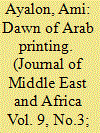

|
|
|
|
|
| Summary/Abstract |
The adoption of printing in the Ottoman Arab provinces in the nineteenth century portended a cultural transformation with profound implications, known as the nahda. Focusing on the Syrian town of Tripoli (Tarabulus al-Sham) as a case study, the article examines the historic cultural change from a peripheral vantage point. It looks at the impact of Arab printing and publishing, which evolved primarily in Cairo, Alexandria, and Beirut, on a community on the fringe of cultural change and examines its cultural interrelationship with these centers. Its findings show that, more than acting as mere consumers of print, Tripoli residents in substantial numbers took an active part in the discourse on social and cultural dilemmas which printing facilitated across the region, before adopting similar novelties in their own town toward the end of the century. The probe casts light on the manifold process by which printing, its products, and its diffusion mechanisms spread throughout the region. As printing was a key channel for circulating news and views, the study also affords a credible notion of the role that communities away from the production epicenters played in the nahda.
|
|
|
|
|
|
|
|
|
|
|
|
|
|
|
|
| 2 |
ID:
118349
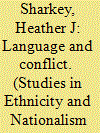

|
|
|
|
|
| Publication |
2012.
|
| Summary/Abstract |
Upon decolonisation, nationalist leaders in two North African countries, Algeria and Sudan, promoted a policy called Arabisation (ta'rib), which sought to impose standard literary Arabic at the expense of English (in Sudan), French (in Algeria), and other local languages (in both places). This language policy reflected the worldview of Muslim leaders, who hoped to break from the colonial past and start afresh while forging alliances with Arab Islamic states. Arabisation succeeded in expanding the use of literary Arabic in Sudanese and Algerian government bureaus as well as in schools and universities. However, in some circles it helped to stimulate oppositional identities that rejected pan-Arabism as a focal point for national pride and that challenged the cultural foundations of national cohesion. Taking a comparative approach, this study argues that Arabic language policy in Algeria and Sudan featured strongly in postcolonial nationalism and civil conflict. It concludes by considering the status of language cultures and policies today in Algeria, the Republic of the Sudan, and the newly independent Republic of South Sudan, and contends that state-led efforts at 'language rationalisation' have not eliminated multilingualism in practice.
|
|
|
|
|
|
|
|
|
|
|
|
|
|
|
|
| 3 |
ID:
177707
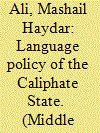

|
|
|
|
|
| Summary/Abstract |
This article examines and critiques the macro top-down constitutional language policy of the so-called the Caliphate State, often referred to by the acronyms ISIS and ISIL. Although Sharicah law, claimed to be the only source of the Caliphate’s laws, does not legislate local, official and national language policies, the Caliphate constitutionalises language policy through the misappropriation of Quranic verses. Article 8 of the constitution mandates the adoption of Arabic as the exclusive national and official language of the Caliphate project and its educational system. The monolithic policy exploits the symbiosis between Arabic and Islam to uproot the Islamic tradition of diversity and plurilingualism, advance its homogenising discourse, and globalise militancy. A religiously justified language policy is instrumental for the Caliphate in achieving cultural and linguistic cleansing, propagating its religious-political ideology and maintaining a strict assimilatory mould of indoctrination.
|
|
|
|
|
|
|
|
|
|
|
|
|
|
|
|
| 4 |
ID:
139605
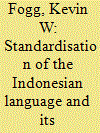

|
|
|
|
|
| Summary/Abstract |
In the 1940s and 1950s, several organs of the newly independent Indonesian state oversaw the standardisation of the Indonesian national language. In this process, Western-oriented bureaucrats pushed the language towards European normativity, significantly decreasing the influence of Arabic. While this reform carried symbolic meaning, the practical ramifications on Indonesian orthography, spelling, and word selection also carried real, non-symbolic effects on the accessibility of this language to Indonesian Islamic leaders. Standardising orthography to use the Roman alphabet rendered many Muslims illiterate in a language they had been using for decades. Choices in word selection and spelling limited the Islamic meanings that the new language could carry, thus impacting how Muslims could use the national language for religious and other purposes. Indonesian linguistic reform carried serious social and political consequences in addition to the symbolic meanings often studied.
|
|
|
|
|
|
|
|
|
|
|
|
|
|
|
|
| 5 |
ID:
163838
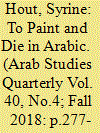

|
|
|
|
|
| Summary/Abstract |
I focus on multilingual usages, specifically code-switching between English and Arabic, in Lebanese American Rabih Alameddine's 1998 novel Koolaids: The Art of War. While the novel portrays English as the emancipatory language of coming out and self-acceptance for gay Lebanese men living in the United States between the late 1970s and mid-1990s, Mohammad, a painter, only comes to terms with his impending demise by reverting to Arabic during the final stages of his losing battle with AIDS. Drawing on findings from psycholinguistic, sociolinguistic, translation, and medical/neurological studies, I compare and contrast verbal encounters between Mohammad and various Lebanese and American characters to foreground strategies intended to exclude and/or include certain parties, be they characters or readers. While Arabic words actually employed are few, I argue that implied code-switching and the dynamics of speaker(s), interlocutor(s), setting(s), and context(s) establish links among AIDS, Arabic, art, and acceptance of death; Arabic resurfaces, when Mohammad is on his deathbed, as the language of his childhood and even serves as the bridge toward his “afterlife.” The primary theoretical impacts of my reading are twofold: minimal code-switching does not, as some claim, showcase shallow multilingualism, and a language-minded approach adds a new dimension to the definition of Lebanese (Arab) American literature by focusing on the emotional rather than the national/ethnic facets of the embedded native language.
|
|
|
|
|
|
|
|
|
|
|
|
|
|
|
|
| 6 |
ID:
090651
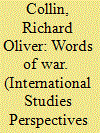

|
|
|
|
|
| Publication |
2009.
|
| Summary/Abstract |
This paper surveys the linguistic aspects of the Anglo-American occupation of Iraq's multilingual society, focusing first on the multilingual character of Iraqi society and the Arabic, Kurdish, and other languages spoken in this rapidly changing society. Discussion then moves to an examination of the inherent difficulties in working across an English-Arabic/Kurdish divide and concludes by discussing the puzzling inability of the American government to grapple effectively with the linguistic challenges of political and military operations in the Middle East.
|
|
|
|
|
|
|
|
|
|
|
|
|
|
|
|
| 7 |
ID:
165770
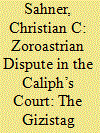

|
|
|
|
|
| Summary/Abstract |
The Gizistag Abāliš is a ninth- or tenth-century Pahlavi text, recording a debate which took place at the court of al-Maʾmūn between a Zoroastrian priest and a heretical dualist. This article, the first in-depth study of this important work, examines the text in its broader Islamicate environment. It argues that the narrative itself is probably fictional, but reflects a real historical phenomenon, namely the interreligious debates which took place among Zoroastrians, Muslims, Christians, and Jews during the ʿAbbasid period. It argues that the text is a unique Zoroastrian example of a literary genre that was common among Christians at the time, namely, “the monk in the emir’s majlis.” By comparing the Gizistag Abāliš to these Christian texts, it explores why Zoroastrians generally did not launch explicit polemics against Islam, comparable to those of other non-Muslim communities. It seems that Zoroastrian authors were more concerned with explaining their own doctrines than critiquing the beliefs of others. This is curious considering the large numbers of Zoroastrians who were converting to Islam at the time. Finally, the article proposes new ways of refining the way we read Pahlavi texts, by analyzing them alongside the literatures of other religious communities in the early Islamic empire.
|
|
|
|
|
|
|
|
|
|
|
|
|
|
|
|
|
|
|
|
|